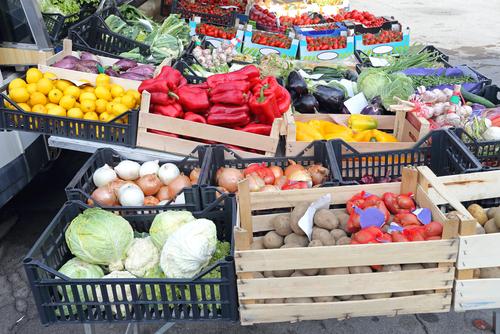Increasing intake of fruits, veggies could prevent type 2 diabetes





Higher levels of plasma vitamin C, total and individual carotenoid biomarkers, and their composite biomarker score appear to reduce the incidence of type 2 diabetes (T2D), according to the results of a prospective case-cohort study in eight European countries.
“These biomarkers are objective indicators of fruit and vegetable consumption and suggest that diets rich in even modestly higher fruit and vegetable consumption could help to prevent development of T2D,” the researchers said.
A total of 9,754 participants with incident T2D and a subcohort of 13,662 individuals from the European Prospective Investigation into Cancer and Nutrition (EPIC) cohort (n=340,234) were included in the EPIC-InterAct case-cohort study.
A multivariable adjusted model revealed an inverse association between plasma vitamin C and risk of developing T2D (hazard ratio [HR] per standard deviation, 0.82, 95 percent confidence interval [CI], 0.76–0.89). Likewise, higher total carotenoids correlated with a lower risk of T2D (HR, 0.75, 95 percent CI, 0.68–0.82). [BMJ 2020;370:m2194]
In addition, a composite biomarker score (split into five equal groups) comprising vitamin C and individual carotenoids was inversely associated with T2D: HRs for groups 2–5 vs group 1 (the lowest group), 0.77, 0.66, 0.59, 0.50, respectively. For participants in groups 1, 3, and 5 of the composite biomarker score, the corresponding self-reported median intake of fruit and vegetable was 274, 396, and 508 g/day.
One standard deviation difference in the composite biomarker score, equivalent to a 66-g/day difference (95 percent CI, 61–71) in total fruit and vegetable intake, correlated with an HR of 0.75 (95 percent CI, 0.67–0.83), which would result in an absolute risk reduction of 0.95 per 1,000 person-years of follow-up if achieved across an entire population with the characteristics of the eight European countries included in this analysis.
“Our findings suggest that higher fruit and vegetable consumption is inversely associated with the incidence of type 2 diabetes, regardless of whether this increase in consumption is from a level below or above the recommended five-a-day threshold,” the researchers said.
“The public health implication of this observation is that the consumption of even a moderately increased amount of fruit and vegetables among populations who typically consume low levels could help to prevent T2D,” they added.
Previous studies that examined the magnitude of the association between circulating vitamin C and carotenoids and the risk of T2D had limited evidence due to the small number of participants. In addition, these studies did not investigate the differences in those association by country. [Am J Epidemiol 2006;163:929-937; BMJ Open Diabetes Res Care 2015;3:e000147; Am J Epidemiol 2006;164:576-585; Arch Intern Med 2008;168:1493-1499]
Moreover, the beneficial effect of fruit and vegetable consumption in the prevention of T2D could be driven by its weight and adiposity regulation, as well as glucose-insulin homeostasis and the inflammatory status of the participants. Fruit and vegetable intake also has a positive influence on the gut microbiota due to the high concentration of fibre and other nutrients. [Am J Clin Nutr 2012;95:184-193; Am J Clin Nutr 2018;108:136-155; Curr Opin Clin Nutr Metab Care 2016;19:471-476; Cell Host Microbe 2018;23:705-715]
“It should be noted that these findings and other available evidence suggest that fruit and vegetable intake, rather than vitamin supplements, is potentially beneficial for the prevention of T2D,” the researchers said.